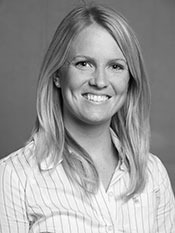Program Information
A Novel Technique to Derive a Clinically-Acceptable Beam Model for Proton Pencil-Beam Scanning in a Commercial Treatment Planning System
J. E. Scholey*, L. Lin, C. G. Ainsley, University of Pennsylvania, Philadelphia, PA
Presentations
SU-F-BRD-8 (Sunday, July 12, 2015) 4:00 PM - 6:00 PM Room: Ballroom D
Purpose: To evaluate the accuracy and limitations of a commercially-available treatment planning system’s (TPS’s) dose calculation algorithm for proton pencil-beam scanning (PBS) and present a novel technique to efficiently derive a clinically-acceptable beam model.
Methods: In-air fluence profiles of PBS spots were modeled in the TPS alternately as single- (SG) and double-Gaussian (DG) functions, based on fits to commissioning data. Uniform-fluence, single-energy-layer square fields of various sizes and energies were calculated with both beam models and delivered to water. Dose was measured at several depths. Motivated by observed discrepancies in measured-versus-calculated dose comparisons, a third model was constructed based on double-Gaussian parameters contrived through a novel technique developed to minimize these differences (DGC). Eleven cuboid-dose-distribution-shaped fields with varying range/modulation and field size were subsequently generated in the TPS, using each of the three beam models described, and delivered to water. Dose was measured at the middle of each spread-out Bragg peak.
Results: For energies <160 MeV, the DG model fit square-field measurements to <2% at all depths, while the SG model could disagree by >6%. For energies >160 MeV, both SG and DG models fit square-field measurements to <1% at <4 cm depth, but could exceed 6% deeper. By comparison, disagreement with the DGC model was always <3%. For the cuboid plans, calculation-versus-measured percent dose differences exceeded 7% for the SG model, being larger for smaller fields. The DG model showed <3% disagreement for all field sizes in shorter-range beams, although >5% differences for smaller fields persisted in longer-range beams. In contrast, the DGC model predicted measurements to <2% for all beams.
Conclusion: Neither the TPS’s SG nor DG models, employed as intended, are ideally suited for routine clinical use. However, via a novel technique to be presented, its DG model can be tuned judiciously to yield acceptable results.
Contact Email:


